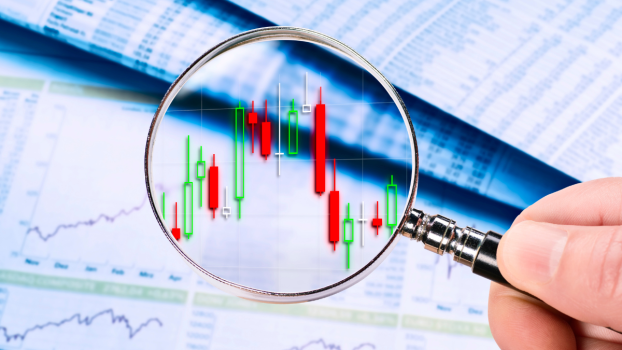A technical trader is a financial market participant who uses technical analysis to make trading decisions. Technical analysis is a method of evaluating securities by analyzing statistics generated by market activity, such as past prices and volume.
Technical trading is a type of trading that is based on analyzing and interpreting charts and other technical indicators, rather than on fundamental analysis. Technical traders rely on past price and volume data, as well as on various technical indicators and chart patterns, to make informed trading decisions.
Technical trading has a long history, with its roots dating back to the late 19th century when Charles Dow developed the Dow Theory, which is still widely used today. In the decades since, technical analysis has become a popular approach to trading in financial markets around the world.
The role of technical analysis in trading is to provide traders with a way to make informed decisions about when to buy and sell securities. Technical analysis can help traders identify trends, identify key levels of support and resistance, and make informed decisions about risk management. Technical analysis can be used in conjunction with fundamental analysis, which focuses on a company’s financial health and industry conditions, to form a complete trading strategy.
Basics of Technical Analysis: Charts and Indicators

There are many different types of technical analysis tools that traders can use to help them make informed trading decisions. Some common technical analysis tools include:
Chart patterns:
These are visual patterns that appear on charts and can provide insight into the likely direction of future price movements. Some common chart patterns include head and shoulders, double tops and bottoms, and triangles. Here are a few examples of common chart patterns that traders often use in technical analysis:
- Head and shoulders: This is a bearish reversal pattern that is typically seen after an uptrend. It consists of a left shoulder, a head, and a right shoulder, with the head being the highest point and the shoulders being lower. This pattern can be a sign that the trend is about to reverse and that the stock is likely to move downward.
- Double tops and bottoms: These are reversal patterns that are formed when a stock’s price hits a resistance level twice, but is unable to break through. A double top is a bearish pattern that is formed when a stock hits a resistance level twice and then starts to decline, while a double bottom is a bullish pattern that is formed when a stock hits a support level twice and then starts to rise.
- Triangles: There are several different types of triangles, including symmetrical, ascending, and descending. Triangles are consolidation patterns that can be either bullish or bearish, depending on the direction of the breakout. A breakout is when the stock’s price moves above or below the triangle’s trend line.
- Flags and pennants: These are short-term continuation patterns that are often seen after a sharp price move. A flag is a rectangle-shaped pattern that forms when the stock’s price moves sideways within a narrow range, while a pennant is a triangle-shaped pattern that forms when the stock’s price moves in a converging pattern. Both patterns can be a sign that the stock is likely to continue moving in the direction of the previous trend.
Indicators
These are statistical calculations based on price and/or volume data that can provide additional insight into market trends and momentum. Some common indicators include moving averages, relative strength index (RSI), and stochastic oscillator.
Here are a few examples of technical indicators:
- Moving averages: A moving average is a technical indicator that shows the average price of a security over a specific time period. For example, if a trader is looking at a 50-day moving average of a stock, the indicator will show the average price of the stock over the past 50 days. Moving averages can be used to identify trends and to smooth out short-term price fluctuations.
- Relative strength index (RSI): The RSI is a momentum indicator that compares the magnitude of recent gains to recent losses in an effort to determine whether a stock is overbought or oversold. The RSI is typically plotted on a scale of 0 to 100, with a reading above 70 indicating that the stock may be overbought and a reading below 30 indicating that it may be oversold.
- Stochastic oscillator: The stochastic oscillator is a momentum indicator that compares a stock’s closing price to its price range over a specific time period. The indicator is plotted on a scale of 0 to 100, with a reading above 80 indicating that the stock may be overbought and a reading below 20 indicating that it may be oversold.
- Bollinger bands: Bollinger bands are a technical indicator that is used to measure a stock’s volatility. The indicator consists of three lines: a simple moving average (SMA) and two standard deviation lines that are plotted above and below the SMA. The distance between the two standard deviation lines is an indication of the stock’s volatility, with a wider distance indicating higher volatility and a narrower distance indicating lower volatility.
- MACD: The moving average convergence divergence (MACD) is a trend-following momentum indicator that shows the relationship between two moving averages of a stock’s price. The MACD is calculated by subtracting a 26-day exponential moving average (EMA) from a 12-day EMA. A positive MACD indicates that the 12-day EMA is above the 26-day EMA, which can be a bullish signal, while a negative MACD indicates that the 12-day EMA is below the 26-day EMA, which can be a bearish signal.
How to read and interpret charts
To read and interpret charts, traders need to become familiar with the various elements that are displayed on a chart, such as the price axis, the time axis, and the various technical indicators that are plotted on the chart. For example, if a trader is looking at a daily chart of a stock, the price axis will show the stock’s price at each point in time, and the time axis will show the time frame being plotted (e.g. days, weeks, months).
How to identify trends and key levels
To identify trends and key levels, traders can use various technical analysis tools such as trend lines, moving averages, and support and resistance levels. For example, if a stock is in an uptrend, a trader might look for a series of higher highs and higher lows on the chart. If the stock is in a downtrend, the trader might look for a series of lower highs and lower lows. Support and resistance levels are price levels where the stock has had difficulty breaking through in the past, and can provide insight into the likely direction of future price movements.
Developing a Technical Trading Strategy
When developing a technical trading strategy, it is important for traders to set clear trading goals and to have a solid risk management plan in place. Some examples of trading goals might include:
- Generating a certain amount of profit over a specific time period
- Increasing the size of a trading account by a certain percentage
- Trading a certain number of times per week or month
To manage risk, traders can use a variety of techniques, such as setting stop-loss orders at key levels, using position sizing techniques to limit the size of individual trades, and diversifying their portfolio by trading multiple assets.
Choosing and combining technical analysis tools
When choosing and combining technical analysis tools, traders should consider which tools are most relevant to their trading style and goals. For example, a trend-following trader might focus on moving averages and trend lines, while a momentum trader might focus on indicators such as the RSI and stochastic oscillator. It is also important for traders to understand the limitations of each tool and to use them in conjunction with other tools and analysis techniques.
Testing and refining a technical trading strategy
Testing and refining a technical trading strategy is an ongoing process that involves regularly evaluating the performance of a strategy and making adjustments as needed. This can involve backtesting a strategy on historical data to see how it would have performed under different market conditions, as well as testing a strategy on a demo account before implementing it in live trading. By continuously testing and refining a strategy, traders can improve their chances of success in the market.
Technical Trading Strategy For Example:
Technical trader might use technical analysis to make a trade:
- The trader starts by selecting a stock to trade and a time frame to analyze. For this example, let’s say the trader has chosen to analyze a daily chart of XYZ stock.
- The trader then plots a variety of technical indicators on the chart, such as moving averages, Bollinger bands, and the MACD.
- The trader analyzes the chart and looks for patterns and trends that might indicate that the stock is likely to move in a certain direction. For example, the trader might notice that the stock’s price has been consistently rising over the past several weeks and that it is currently trading above its 50-day moving average.
- Based on this analysis, the trader decides to buy XYZ stock. To manage risk, the trader sets a stop-loss order at a certain price level to limit potential losses if the trade doesn’t go as planned.
- The trader then monitors the trade and looks for technical signals that might indicate when it is time to sell. For example, the trader might look for a bearish reversal pattern on the chart or a breakdown below a key support level.
- When the trader decides to sell, they will place a sell order and close the trade. The trader can then evaluate the trade and make any necessary adjustments to their trading strategy based on the results.
Implementing a Technical Trading Plan
To implement a technical trading plan, traders need to be able to identify and act on technical signals that indicate that it is time to buy or sell a security. This typically involves regularly monitoring charts and other technical indicators and looking for specific patterns and trends that might indicate a change in market direction.
When executing trades based on technical signals, it is important for traders to have a clear plan in place for how they will enter and exit trades. This might involve setting stop-loss orders at key levels to limit potential losses, or using position sizing techniques to manage risk.
Tips for managing trades and minimizing risk
To manage trades effectively, traders should also have a plan in place for how they will monitor their trades once they have been placed. This might involve setting alerts or using software to help track the progress of trades.
Common mistakes to avoid when implementing a technical trading plan
There are several common mistakes that traders can make when implementing a technical trading plan. These include:
- Over-trading: This occurs when traders take too many trades, often because they are trying to make up for losses or because they are over-confident in their trading strategy. Over-trading can lead to increased risk and reduced profits.
- Failing to follow a plan: It is important for traders to have a clear plan in place for how they will enter and exit trades and to stick to that plan. Failing to follow a plan can lead to poor decision-making and increased risk.
- Not managing risk effectively: Proper risk management is essential for long-term success in trading. This includes setting stop-loss orders at key levels, using position sizing techniques, and diversifying a portfolio.
- Not learning from mistakes: It is important for traders to regularly evaluate their trades and to learn from their mistakes. This can help traders to identify and address any weaknesses in their trading strategy and to improve their chances of success in the market.
Advanced Topics in Technical Trading
Advanced topics in technical trading include using technical analysis in conjunction with fundamental analysis and incorporating risk management techniques such as stop-loss orders.
Using technical analysis in conjunction with fundamental analysis can help traders to get a more complete picture of the market and to make more informed trading decisions. Fundamental analysis involves evaluating a company’s financial health and industry conditions to determine the value of its securities. By combining fundamental analysis with technical analysis, traders can get a more comprehensive view of a stock’s value and the likely direction of its price.
Incorporating risk management techniques such as stop-loss orders
Stop-loss orders are a risk management technique that traders can use to limit potential losses on a trade. A stop-loss order is an order to sell a security when it reaches a certain price, and it is typically used to protect against significant price declines. By using stop-loss orders, traders can minimize the potential losses on a trade and better manage their risk.
Advanced chart patterns and indicators for more experienced traders
There are also many advanced chart patterns and indicators that are suitable for more experienced traders. These include advanced versions of common patterns and indicators, as well as more complex techniques such as Elliott Wave analysis and Gann analysis. These advanced techniques can help traders to identify more subtle trends and patterns in the market and to make more informed trading decisions.
The bottom line
In conclusion, technical trading is a method of evaluating securities based on technical analysis tools such as chart patterns and indicators. By developing a solid trading strategy and implementing a well-thought-out trading plan, traders can use technical analysis to make informed decisions about when to buy and sell securities. However, it is important for traders to understand the limitations of technical analysis and to continue learning and refining their strategies in order to improve their chances of success in the market.
In summary, the key points covered in this article include an introduction to technical trading, a discussion of the basics of technical analysis, and a step-by-step guide to developing and implementing a technical trading plan. We also covered advanced topics in technical trading and discussed the importance of ongoing learning and development for technical traders.
There are several benefits to technical trading, including the ability to identify trends and key levels in the market, the potential to make informed trading decisions based on data and analysis, and the ability to manage risk effectively through the use of stop-loss orders and other risk management techniques. However, there are also potential drawbacks to technical trading, including the reliance on past data and the risk of over-analyzing or over-interpreting charts and indicators.
It is important for technical traders to continue learning and developing their skills in order to improve their chances of success in the market. This might involve staying up-to-date on the latest technical analysis tools and techniques, regularly testing and refining trading strategies, and seeking out educational resources and training opportunities.







